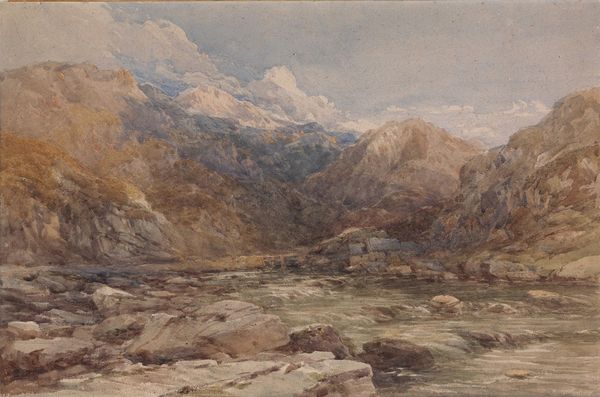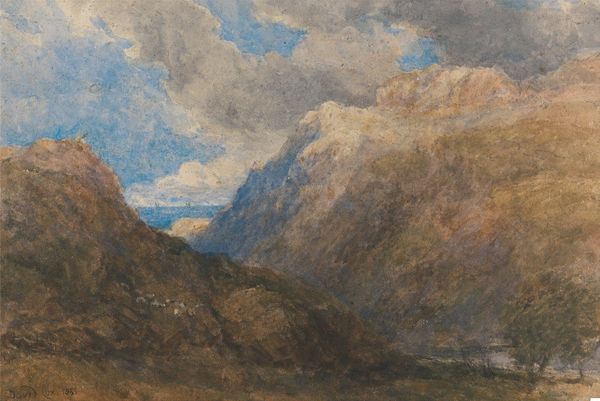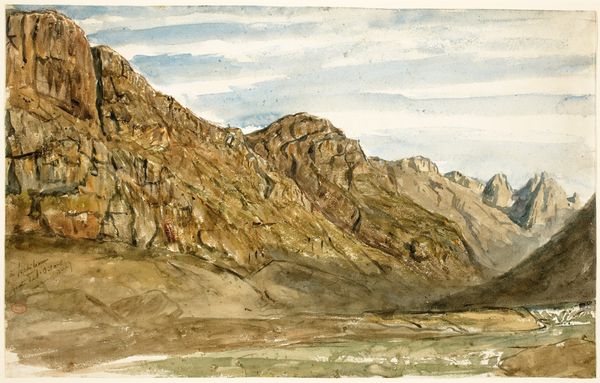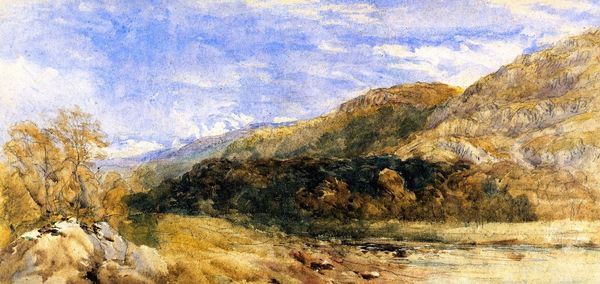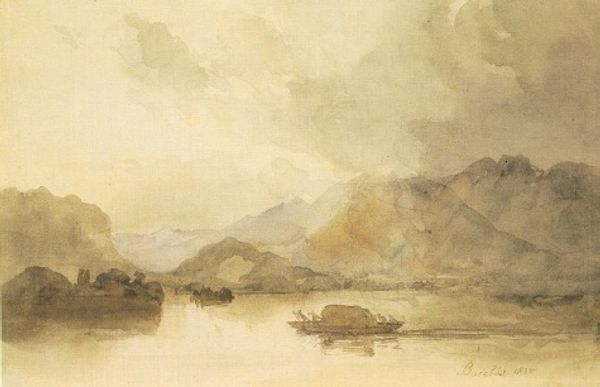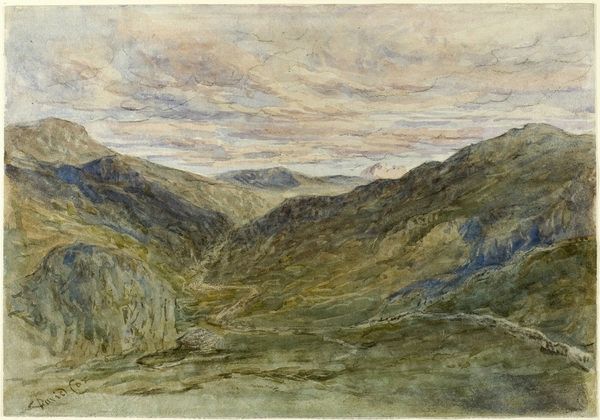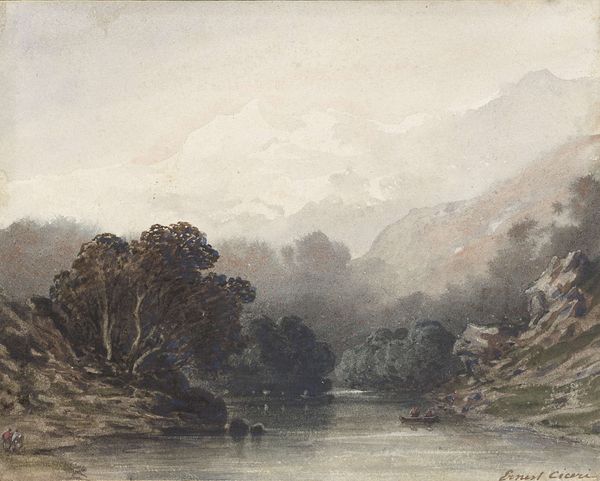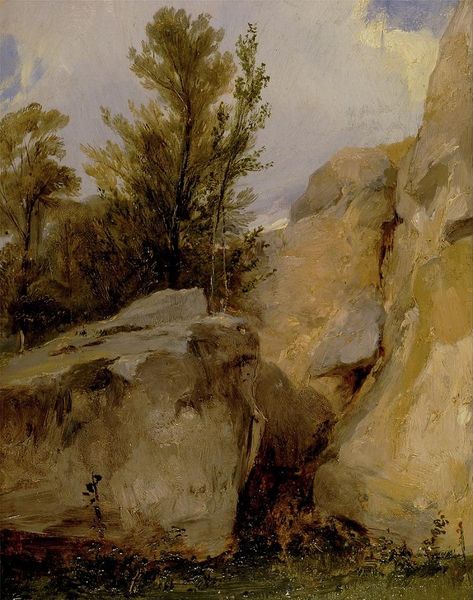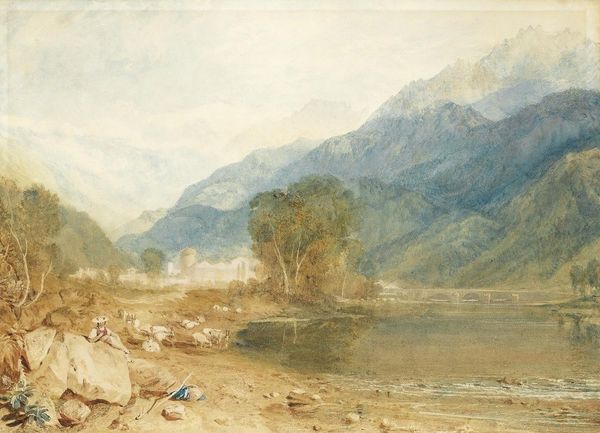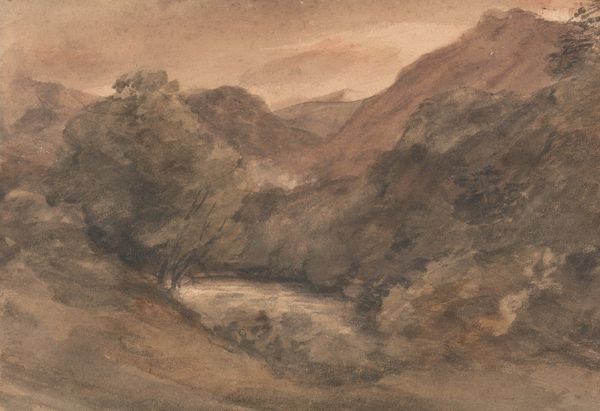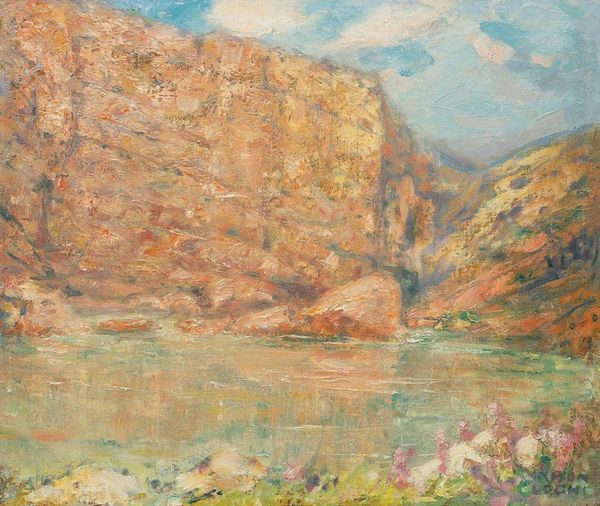
plein-air, watercolor
#
plein-air
#
landscape
#
charcoal drawing
#
oil painting
#
watercolor
#
romanticism
#
watercolor
Copyright: Public domain
Editor: Here we have David Cox’s “Pont-Y-Pair, near Bettwys-Y-Coed, North Wales,” a watercolor work. It evokes such a serene feeling, looking at the tranquil river flowing between the wooded hills. How do you see this piece? Curator: Focusing on the materials, think about the accessibility of watercolor for a 19th-century artist. It’s relatively cheap, easily transportable, and suited for plein-air studies. What does that suggest about Cox's relationship to the landscape and the art market? Was he responding to a demand for picturesque views? Editor: That's an interesting point. I hadn’t considered the practical aspects influencing his choice of medium. So, the *way* it’s made is part of the *what* it is. Do you see this piece relating to other work being made at the time? Curator: Absolutely. Consider the rise of tourism and the consumption of landscape as a commodity during this period. Artists like Cox were not just depicting nature but also packaging it for a burgeoning middle class hungry for images of the sublime. The watercolor medium, itself, becomes implicated in a larger system of production and consumption of idealized scenery. Editor: It almost sounds like you are implying the production and commodification of natural spaces are inextricably tied to watercolor’s rise in popularity, suggesting Romanticism has some dark sides. It is such a different take! Curator: The medium's very affordability contributed to its broad appeal, enabling a wider range of artists to participate in the market and disseminate idealized views, arguably shaping perceptions of the natural world through artistic production. Editor: I hadn’t considered those material implications. This opens up a whole new way to consider the piece. Curator: Precisely. By examining the means of production, we understand not just the beauty, but the cultural and economic forces at play.
Comments
No comments
Be the first to comment and join the conversation on the ultimate creative platform.
